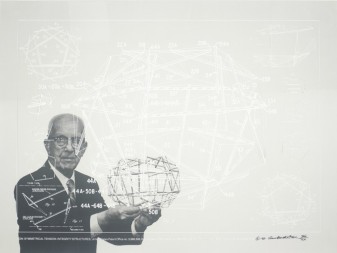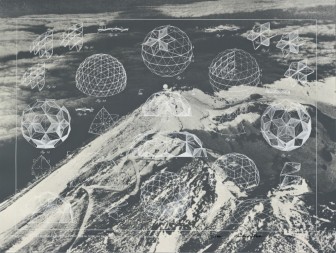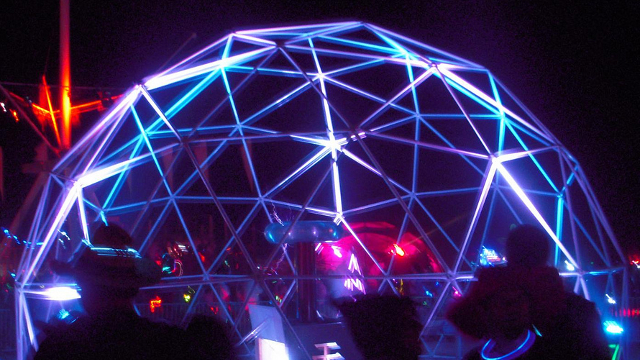
The San Francisco Museum of Modern Art is showing, for just a few more short days, an exhibit called "The Utopian Impulse: Buckminster Fuller and the Bay Area." Fuller never actually lived in the Bay Area, but the exhibit's designers seem to think he would have liked it. Considering the region's abundance of oddball inventions, disruptive technology, and sustainability experiments, it's hard to disagree. And Fuller was no stranger to the kind of collaboration between engineers and designers that actively ferments in the Bay Area today.
Geodesic domes are a great example. Fuller didn't actually invent the things. The very first was a planetarium in Germany, built by one Walther Bauersfeld in 1926, but it wasn't called a geodesic dome. It was Fuller who coined that term in the forties, as he was developing and popularizing the architectural design. "Geodesic" refers to the shortest distance between two points on Earth's surface, which is always a segment of a great circle--a circle that slices through the center of a sphere. Geodesic domes are built entirely out of great circles.

Fuller's ideas about domes were intimately connected* with another concept he named: tensegrity. Tensegrity structures are built out of compressed members (bars) and tensioned members (cables) such that the bars never touch. The cables follow the shortest paths between bars and are therefore geodesic, resulting in exceptional strength. Stress force is always transmitted across the shortest distance, so tensegrity structures--whether bridges, buildings, or works of art--are optimally designed to handle it.
Artist Kenneth Snelson was involved with Fuller's tensegrity work from the beginning, creating aesthetic applications even as Fuller was working on practical ones. In fact, Fuller commissioned a piece from Snelson early on, which was later shown with some of Snelson's other work at the New York Museum of Modern Art.
Geodesic domes in the Bay Area today follow the legacy of both men. As Burning Man approaches, the thoughts of many Burners are turning to their domes. (Even those who prefer to camp in off-the-shelf tents are likely to benefit from tensegrity.) The SF MOMA show is only open until July 29th, so go check it out if you need inspiration for your dome--or for your livingry in general.

